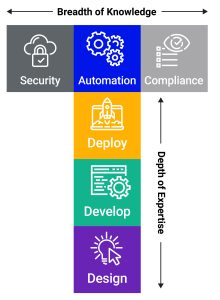The criticality of environmental strategy choices, as a subset of a broader sustainability agenda, increasingly defines a company’s prospects in today’s competitive marketplace. According to the World Economic Forum’s Global Risk Report, environmental concerns dominate the top long-term risks among members of the World Economic Forum’s multi-stakeholder community; one of the top five risks by impact are categorized as environmental. Environmental sustainability is no longer just a corporate social responsibility issue or a nice to have—it’s a business imperative.

Customers and employees have become much more environmentally conscious and a recent study by IBM found that nearly 80 percent of consumers indicate sustainability is important to them and 60 percent are willing to change purchasing habits to reduce environmental impact. Moreover, opportunities and risks related to decarbonization strategies and operating models impact all sectors, business functions and communities in the world we share.
With expanded regulatory compliance and pressures from key stakeholders, companies are realizing they must be transparent about sustainability efforts. As a result, leading companies around the world are now committed to validating measured Environmental, Social and Governance (ESG) reporting and non-financial performance disclosures. ESG performance and reporting summarize efforts and provide stakeholders and investors with documented performance and insights to make more holistic and sustainable decisions.
The European Union (EU) has the most sophisticated set of ESG regulations. The regulations were developed to help increase sustainable investing and to further the EU Green Deal. The vision of the EU Green Deal promises to combat climate change and environmental degradation by eliminating net emissions of greenhouse gases by 2050, decoupling economic growth from resource us, and leaving no person or community behind in sustainable transition.
Sustainability as a transformation catalyst an IBM Institute for Business Value (IBV) January 2022 report describes how converting aspirations into reality are met with challenges—and that to operationalize sustainable change, you need more than a coalition of the willing. The gap between intent and action is glaring, where only four out of 10 companies have identified the initiatives to close their sustainability gaps. Additionally, only one-third of companies have integrated sustainability objectives and metrics into business processes. Yet, in the sea of unrealized ambitions, there is hope. The emergence of the “Transformation Trailblazers,” who make up 13 percent of executives surveyed, are considered the most successful in their sustainability journey.
Other key takeaways from the report:
Trailblazers have embedded sustainability across company functions and within their broader ecosystem.
Sustainability efforts show up across functions within the organization. Some 79 percent work effectively with their partners on sustainability engagements, 59 percent engage customers for sustainability input, and more than 50 percent have embedded sustainability within the core of their product innovation, manufacturing, and supply chain processes.
Trailblazers are winning with sustainability.
Between 2018 and the first half of 2021 trailblazers achieved an estimated cumulative revenue growth of 51 percent, a difference of nine percentage points over their next best performing peers.
Trailblazers rely deeply on digitalization and variety of technologies to drive ESG-outcomes.
Trailblazers engage with, and deploy more technology than other companies, and 70 percent are using hybrid cloud to advance their sustainability objectives. The variety and depth of their technology stack enables them to do more with their data, driving better decisions and innovation. Scope 3 emissions continue to be difficult to track and report without digitalization and assurance.
Supply chains are the conduit for change in Scope 3 emissions
Scope 3 emissions are the resulting emissions of activities not owned or controlled by the reporting organization. But they are significant because the value chain of the reporting organization is indirectly impacted. Given that most of Scope 3 emissions occur within the supply chain, addressing supply chain emissions leads to significant impact and improvements when enterprises are committed to comprehensive reduction goals. Transformation Trailblazers stand out from their peers by tapping the potential of emerging technologies and data, broadening C-level and CEO involvement and responsibility and collaborating with ecosystems and supply chain partners.
A focus on supply chain heightens efforts to address Scope 3 emissions. Leaders have a duty to understand their organization’s impact and opportunity to tackle these emissions, while designing a future supply chain landscape that involves product development, sourcing, manufacturing, transportation and logistics. To drive responsible and equitable outcomes enterprises must align people, the planet, profit and purpose.
According to the Environmental Protection Organization, supply chains often account for more than 90 percent of an enterprise’s greenhouse gas emissions, when considering their overall climate impacts.
Supply chains can be a source of innovation and impact when it comes to sustainable outcomes. The ability to identify, measure and track the source of scope 3 emissions, and use technology and process re-engineering to tackle emission reduction is a game-changer. The redesign to reduce and/or eliminate the contribution of scope 3 emissions along with efforts to future-proof further impact of increasing emissions is critical at every step of the value chain including sourcing manufacturing, operations, transportation and logistics.
Talk is one thing, finding a path to successful action is another
Digital transformation will help make the leap from idea to reality. Technology innovations unavailable to previous generations—artificial intelligence (AI), 5G, Internet of Things (IoT), cloud and blockchain—will accelerate this progress in three ways:
◉ The innovations capitalize on data to reveal new insights and underpin new solutions to existing problems. They can change business practices and drive the emergence of the sustainable enterprise, and they support greater public, private and not-for-profit collaboration.
◉ More data and insight equate to more progress. Data and information allow economic actors to drive change in business priorities and practices. Greater transparency and insights allow consumers, companies, investors and governments to change the way they buy, produce, sell, transport, consume and govern. These shifts have the potential to transform the way economies operate as data is infused into business processes and decision making.
◉ The technologies that bring data and insight to bear on the environmental imperative are reshaping the very nature of a company’s operations and business model. Businesses are not just becoming digital. They are applying AI and other exponential technology to create new business platforms to compete and collaborate, and intelligent workflows to drastically improve operations and customer experiences. They’re also using these technologies to augment the capabilities of their people and improve the employee and customer experiences of their organizations.
Digital technologies make possible many market-based mechanisms that drive change and innovation. They can support incentive mechanisms for action at a scale and speed that would be impossible through traditional means of regulation and government intervention. Not only are digital technologies critical for monitoring, verification and reporting, technologies such as blockchain make it easier to share data and manage transactions that support more efficient climate markets.
The combination of business model transformation, digital transformation and a new environmental governance structure has the potential to bring about the societal transformation needed for environmental sustainability. Digital technologies can reshape what is possible, stimulate new innovations and enable effective ways of working together.
Digital supply chains need to prioritize sustainability goals to drive responsible and equitable outcomes
Key areas in supply chain and finance transformation can increase shareholder value, transparency and deliver the brand promise to create differentiation.
Re-thinking sourcing, networks and business models including:
– Product and network design using life-cycle assessment, AI and machine learning
– Circular innovation
– Responsible sourcing and supplier diversity
– Supply and network risk management
Optimizing for net-zero, green operations and asset management, including:
– Decarbonizing operations, networks and logistics
– Circular networks
– Green factories and facilities
– Asset management
Accounting for sustainability and the quadruple bottom line (economic, environmental, social and cultural sustainability) including:
– Sustainable finance
– Environmental, social and governance reporting
– Circular value flows
– Measuring social impact
Enterprises that embrace sustainable practices are creating a vibrant corporate culture, more engaged top and bottom line growth for future generations. Organizations that lead on sustainability measures and initiatives do not approach them as secondary objectives, philanthropy, or a stand-alone project. They integrate related ESG-objectives into core motivation and radically alter the corporate equation for success. Sustainability and impact provide a guiding and multi-faceted prism through which priorities and activities are viewed and leverage their supply chains for ecosystem collaboration. Moreover, digital technologies can create new paths for tapping into the power of data and information—providing visibility into the environmental and social implications of business activities across supply chains.
It’s an exciting and gratifying time to pursue supply chain sustainability. Wherever you are on your journey, we’re here to help you explore and capture new opportunities.
Source: ibm.com



















